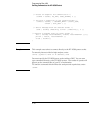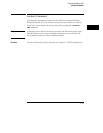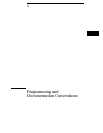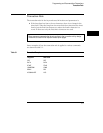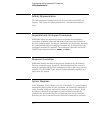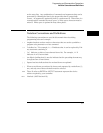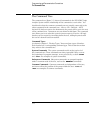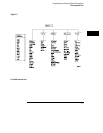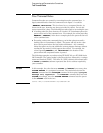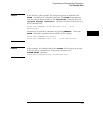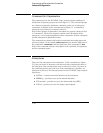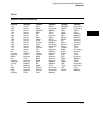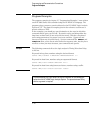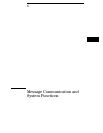
The Command Tree
The command tree (figure 5-1) shows all commands in the HP 16500C Logic
Analysis System and the relationship of the commands to each other. You
should notice that the common commands are not actually connected to the
other commands in the command tree. After a <NL> (linefeed - ASCII
decimal 10) has been sent to the instrument, the parser will be set to the root
of the command tree. Parameters are not shown in this figure. The command
tree allows you to see what the system’s parser expects to receive. All legal
headers can be created by traversing down the tree, adding keywords until
the end of a branch has been reached.
Command Types
As shown in chapter 1, "Header Types," there are three types of headers.
Each header has a corresponding command type. This section shows how
they relate to the command tree.
System Commands The system commands reside at the top level of
the command tree. These commands are always parsable if they occur at
the beginning of a program message, or are preceded by a colon. START
and STOP are examples of system commands.
Subsystem Commands Subsystem commands are grouped together
under a common node of the tree, such as the MMEMORY commands.
Common Commands Common commands are independent of the tree,
and do not affect the position of the parser within the tree. *CLS and
*RST are examples of common commands.
Programming and Documentation Conventions
The Command Tree
5–6



